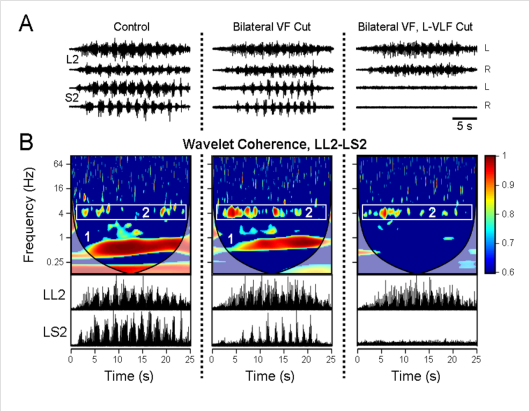Statistical Analyses of Non-Stationary Physiological and Pathophysiological Activity of the Nervous System
The detection of firing patterns embedded within a complex nonstationary signal and noisy background activity is crucial for the interpretation of electrophysiological recordings from the brain, spinal cord, and the neuromuscular system under normal and pathological conditions. In a recent work we have used Wavelet Transformation (WT) for the analyses of non-stationary patterns produced by the mammalian spinal cord preparations (Mor and Lev-Tov, 2007, Etlin et al, 2010). The WT WT/coherence algorithms enable us to characterize the dynamic profile of the rhythmic signals, to assess the linear relation between spectra of any given pair of variables, and to uncover and extract hidden components of the rhythm in the time/frequency domain. These algorithms are integral parts of "Spinalcore" a menu-driven statistical package we developed. The computational efficiency of "Spinalcore" is now improved by graphical processing units (GPUs) based parallel computing (Mor et al. 2011). The use of "Spinalcore" is expanded these days for the detection and analysis of pathological and pathophysiological activity of the central nervous system.


